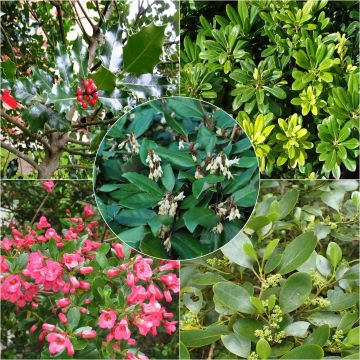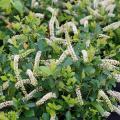Fragrant Spring Bushes
Would this plant suit my garden? Set up your Plantfit profile →
Available in 0 sizes
Available in 0 sizes
Available in 0 sizes
Available in 0 sizes
Available in 0 sizes
Available in 0 sizes
Available in 0 sizes
Available in 0 sizes
Available in 0 sizes
Available in 0 sizes
Available in 0 sizes
Our best varieties of shrubs for a fragrant spring. Whether evergreen or deciduous, many bushes that bloom between April and June offer fragrant flowering that appeals to both pollinators and gardeners. The Lilac (Syringa), especially the common lilac and its multiple varieties with clusters of single or double flowers ranging from white to pink and violet, needs no introduction. Also discover Chinese lilacs and their hybrids (Syringa microphylla 'Superba', Syringa hyacinthiflora 'Maiden's Blush'), which are earlier flowering and sometimes repeat-flowering in late summer. The mock orange, not quite summer-blooming, is also essential in a fragrant garden. They have proven themselves, like Philadelphus coronarius with its incomparable neroli fragrance, and the highly fragrant Philadelphus polyanthus Mont Blanc, ideal for small gardens. Plus Gardenia, of course, an exceptional indoor plant, known to all and adored for the incomparable fragrance of its white flowers. There are now hardier varieties such as 'Crown Jewel' or 'Kleim's Hardy', which can be grown in the ground. The Mexican orange blossom is also starting to make its mark in our gardens, thanks to beautiful evergreen foliage and bouquets of small orange-scented flowers. In early spring, we can enjoy late-flowering Daphnes, such as Daphne x transatlantica Eternal Fragrance, which blooms between March and April. In May-June, our parks and streets are alive with the constant buzzing of bees attracted by the sweet scent of the Lime tree. Let's also mention laburnum with its golden clusters in May-June, as well as Styrax, and brooms like Spartium junceum, the Spanish broom whose narcotic fragrance enhances the Mediterranean spring, and many others.
Haven't found what you were looking for?




















































